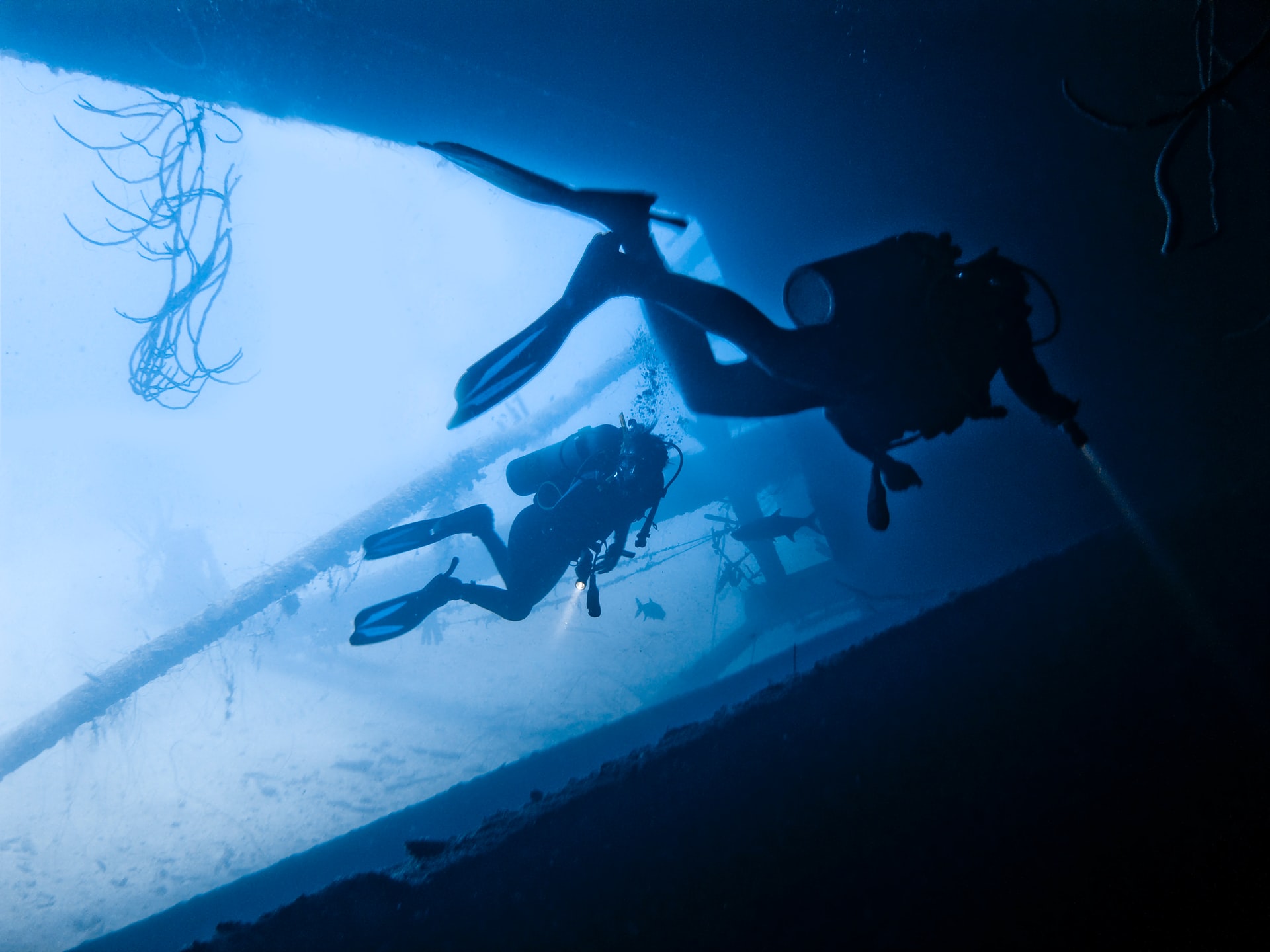Have you heard the term “the bends,” or its more correct name “decompression sickness” before?
You might know that these names are used to describe a problem that scuba divers can suffer from if things go wrong.
Perhaps, you remember something about nitrogen bubbles and wonder what this is all about.
Whether you’re a certified diver needing a refresher or just interested in finding out more, we’re going to look at everything to do with diving and nitrogen, see how it builds up in the body when you’re underwater, and how exactly this can cause problems.
We’ll see that so long as good diving practices are followed, while nitrogen is a limiting factor to our dives’ length and depth, it’s something we can work with to keep safe.
- Why Does Nitrogen Build up When Scuba Diving?
- Where Exactly Does Nitrogen Build up in the Body?
- Does Nitrogen Build up Equally in Each Person?
- What Is the Use of Nitrogen for Scuba Divers?
- Is Nitrogen Built up in the Body Harmful if I Descend Slowly Enough?
- Why Do Nitrogen Bubbles Form During Decompression Sickness?
- Can Other Gases Divers Breathe Also Build Up?
- Conclusion
- You Might Also Like…
Disclosure: this post contains affiliate links (clearly marked with ), which means we may earn a commission if you buy something through them, at no additional cost to you.
Why Does Nitrogen Build up When Scuba Diving?
The air around us, the same as we use when scuba diving, comprises many gases mixed together.
You’ll probably be familiar with some of the major ones but perhaps don’t know all of the constituent gases that make the air we breathe.
Under normal conditions, dry air contains the following main gases:
| Nitrogen | 78.084% |
| Oxygen | 20.946% |
| Argon | 0.934% |
| Carbon Dioxide | 0.033% |
There are other gases in minimal percentages like neon, helium, krypton, hydrogen, xenon, and carbon monoxide that total together about 0.003%.
As you can see, nitrogen is by far the biggest constituent of air, with it being more common than all the other gases put together.
Our bodies use up oxygen during the process to convert the food we’ve eaten into energy (called metabolism) and produce carbon dioxide as a waste product.
So the air we breathe out will have less oxygen and more carbon dioxide in it.
The approximate percentage of the three primary gases in the air we inhale compared to that we exhale are:
| Gas | Normal Air | Exhaled Air |
| Nitrogen | 79% | 79% |
| Oxygen | 21% | 16% |
| Carbon Dioxide | 0.03% | 4% |
As you can see, the nitrogen percentage does not change as our bodies do not use it.
How Does Nitrogen Build up in the Body?
Nitrogen is what we call an inert gas, so what we inhale, we exhale.
All gases we breathe, including nitrogen, will enter the body via the lungs, get dissolved into our blood, and eventually enter into all of our tissues.
Because nitrogen isn’t used by our metabolism, without any changes in the external air pressure, the gas will be at what is called an equilibrium inside our bodies where what is dissolved matches what is around us.
This equilibrium is just part of normal biology, and having the absorbed nitrogen inside our blood and tissues isn’t any problem at all, but things change when we head underwater.
What Happens When We Dive?
When we are on land, the air pressure that we experience is relatively constant.
Any changes under typical day-to-day circumstances are minimal and slow, so the equilibrium balances itself out as needed.
If we travel to a modest altitude where there is less air pressure, then the nitrogen absorbed in our tissues will reduce a little bit accordingly.
Any changes experienced are so small they can take place gently via the lungs without causing any adverse effects.
When we scuba dive, we undergo rapid and significant changes in the pressure surrounding us as we descend and ascend.
At sea level, air pressure is 1 bar / 1 atmosphere (ATA).
For every 33 ft / 10m of saltwater we descend, the pressure increases by 1 bar.
| Depth | Pressure |
|---|---|
| 0 ft / 0m | 1 ATA |
| 33 ft / 10m | 2 ATA |
| 66 ft / 20m | 3 ATA |
| 99 ft / 30m | 4 ATA |
| 132 ft / 40m | 5 ATA |
The regulator that you breathe from takes the high-pressure air in your scuba tank and delivers it to you at a pressure that matches the water around you.
If it didn’t do this and instead supplied air at the same pressure as at the surface, then you wouldn’t be able to inflate your lungs.
The water pressure would stop you from inhaling, which is why you can’t dive deeply with a long snorkel.
Additionally, of extreme importance, if it didn’t reduce the high pressure from the tank down, you would suffer lung pressure injuries.
When the overall pressure of the breathing air increases as we descend, so does its density.
Density measures how closely packed together the gas molecules are, and hence how many of them there are in a given volume.
The percentages of the different gases stay the same, but their densities increase.
As nitrogen is part of the mix of gases in air, the pressure it has is called its partial pressure. This is nitrogen’s part of the total pressure of the gas.
As the density of nitrogen and its partial pressure increases, more molecules are being breathed in per breath.
Accordingly, your body, including your blood and soft tissues, will absorb more nitrogen molecules as you are underwater.
The amount of nitrogen in your body builds up until, if you remain at a constant depth long enough, just like at the surface, you reach a state of equilibrium (called saturation) where what you have inside figuratively matches that which you’re breathing.
Where Exactly Does Nitrogen Build up in the Body?
Nitrogen will build-up everywhere in your body when you are exposed to a higher gas partial pressure while underwater.
The rate at which it builds up and would eventually reach saturation depends on the type of tissue.
How inert gases are absorbed is a theory that is still developing, and scientists do not have every mechanism by which it works thoroughly investigated.
However, broadly speaking, we can say that what are described as fast tissues like blood and nerve tissues take up nitrogen and reach saturation more quickly than slow tissues like fat and bone.
Given enough time, all body tissues would become saturated with nitrogen.
Does Nitrogen Build up Equally in Each Person?
Different people will absorb nitrogen at different rates due to varying body compositions and their circulatory systems’ performance.
The scientific models that have been designed for safe diving with computers or tables take this into account as much as is reasonably possible and are regarded as cautious enough to allow for different body types to remain safe.
However, people with generally poor fitness levels and higher body masses should be aware that they are more susceptible to decompression sickness.
What Is the Use of Nitrogen for Scuba Divers?
Nitrogen itself is of no specific use to scuba divers.
In fact, the nitrogen component of air can cause problems with coordination and judgment from nitrogen narcosis when making dives approaching and past 100 ft / 30m.
However, as we have seen, nitrogen is the main component of the “free” gas that we have readily available to scuba dive with.
A gas that didn’t have any inert nitrogen at all would be costly to produce, so it would be impractical for recreational diving.
It would also be problematic, as the nitrogen has to be replaced with something in the gas mix.
Higher levels of oxygen, for example, would not be suitable as they would cause the deadly problem of oxygen toxicity.
Technical divers will replace part of the nitrogen content in their diving gas with helium, albeit at a high cost to reduce the effects of narcosis.
Because helium is also an inert gas, it will still build up in the body during the dive and need to be removed safely with decompression procedures.
Fortunately, recreational divers have enriched air (nitrox) that can be produced at a relatively low cost.
Enriched air removes some of the nitrogen (usually down to 64 or 68%) and replaces it with more oxygen to give divers a gas that allows them to dive with reduced inert gas absorption and hence get longer no-decompression times or more conservative dives compared to the same made with air.
Is Nitrogen Built up in the Body Harmful if I Descend Slowly Enough?
In practice, your descent rate will not reduce the build-up of nitrogen by any significant amount.
In fact, in reality, descending slowly can cause your fast tissues to fill up, and your dive computer will accordingly estimate a reduction in no decompression time.
This could leave the time available to you at your target depth when you eventually reach it reduced.
Within reason, while looking after buoyancy control and equalization of body air spaces, the best method is to descend with your buddy as fast as is safely possible to maximize the time and air you will have at your target.
Remember that the two factors determining nitrogen build-up are your depth and the time spent there.
Why Do Nitrogen Bubbles Form During Decompression Sickness?
As we descend and then spend time at a given depth, we’ve seen that nitrogen is absorbed into our tissues.
Absorption will continue until either the particular tissue has reached saturation and it is in equilibrium, or we start to ascend, and the pressure around us begins to reduce.
The recreational scuba diving decompression models that dive tables and computers use have been designed so that as long as we’ve remained within the no-decompression time limit, we can return directly to the surface.
Staying within the limit means that nitrogen has not built up to significant levels in our tissues and that it can be released slowly enough to be safe as we ascend.
Problems occur if we ascend too quickly to the surface or have exceeded the no-decompression time and don’t make the required decompression stops.
Our tissues will have more nitrogen in them than the gas we are breathing as we ascend and become what is called super-saturated.
Usually, as we ascend, the nitrogen exits your tissues slowly and in a controlled way is carried away by the blood and eventually breathed out via the lungs.
If supersaturation occurs at too great a degree, bubbles can form in tissues when the pressure difference becomes too great, and this causes decompression sickness.
Decompression sickness can be dangerous and even deadly to a scuba diver.
The signs and symptoms of DCS range from relatively mild such as a rash or irritating joint pain, to far more severe such as loss of balance or vision, unconsciousness, or death.
If a diver is in good general health, decompression sickness can be avoided by diving conservatively and staying well within the no-decompression limits of dive tables or computers.
Ascend slowly, following the rules of your table or computer, and always make a safety stop.
Scuba divers should also avoid factors that make you more likely to be susceptible, for example, dehydration, obesity, diving when overtired, and smoking.
Remember that even when you ascend safely, following the table or computer, you will still have some nitrogen left in your tissues after a dive that takes a long time at the surface to get removed.
Computers or tables need to be used correctly to plan repetitive dives to consider the adjusted, reduced no-decompression time allowable by the remaining nitrogen.
Can Other Gases Divers Breathe Also Build Up?
All gases that you breathe will build up in the body until they reach partial pressure equilibrium with their surroundings and tissues are saturated.
However, it is only because the percentage of nitrogen is so large in the air mix and because it is inert that this causes a problem.
Oxygen is metabolized, so some absorbed is used, and its partial pressure is low enough that it wouldn’t cause decompression problems (at least not until far, far after nitrogen has).
Any other inert gas used instead of nitrogen, such as the helium used by technical divers to reduce narcosis, will act in the same way and also needs to be removed by careful and controlled slow decompression.
It’s worth noting that if you travel to high altitude on land, the inert gases are no longer a problem. However, low oxygen partial pressure to metabolize will be.
As the air pressure reduces with altitude, if you travel very high (above about 8,000 ft / 2,400m), you’ll start to feel the effects of altitude sickness.
Divers should also remember that if they go to altitude too quickly after diving that this can cause decompression sickness, even if good diving practices have been followed.
Conclusion
We’ve seen that the inert nitrogen in air has the potential to cause a lot of problems for scuba divers.
However, by diving sensibly and staying within the limits of what you’ve been taught, and maintaining good health, you don’t need to be overly concerned.
Like the size of your air tank or getting cold, nitrogen causes a limit on how long your dive can be.
So long as you’re aware of that and respect the limits, you shouldn’t have any problems.
You Might Also Like…
-

How Do Scuba Divers Drink Water? 5 Possible Ways (+7 Tips)
-

How Long Can Scuba Divers Stay Underwater? (+9 Limiting Factors)
-

Are Scuba Divers Athletes? All the Facts (+New Competitive Forms)
-

Are Sharks Scared of Scuba Divers? (What Every Diver Must Know)
-

Who Should Not Scuba Dive? 17 Reasons (Every Diver Should Know)
-
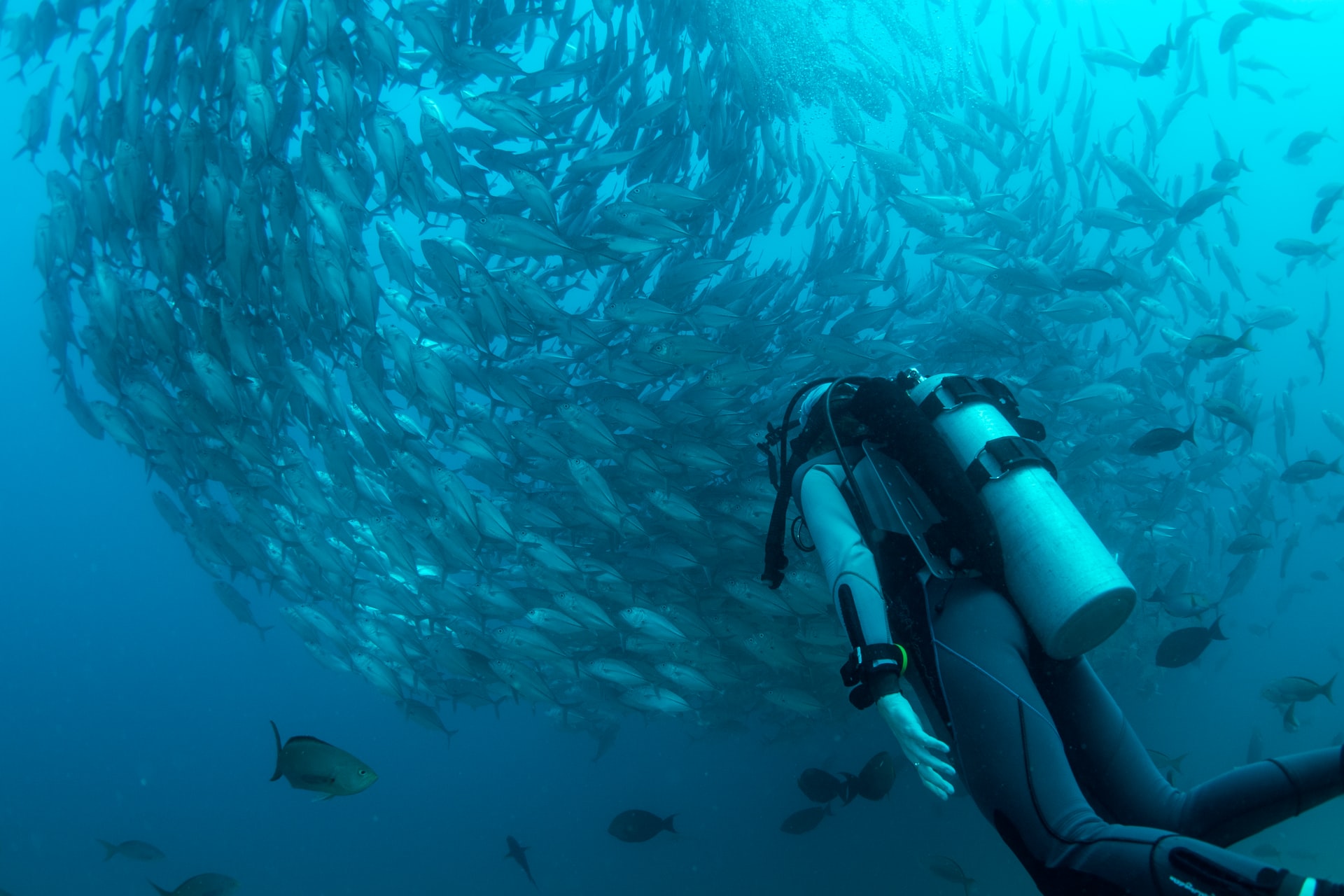
Should I Be Scared of Scuba Diving? 8 Common Fears (Debunked)
-

Why Do Scuba Divers Use More Air at Depth? (+4 Practical Tips)
-
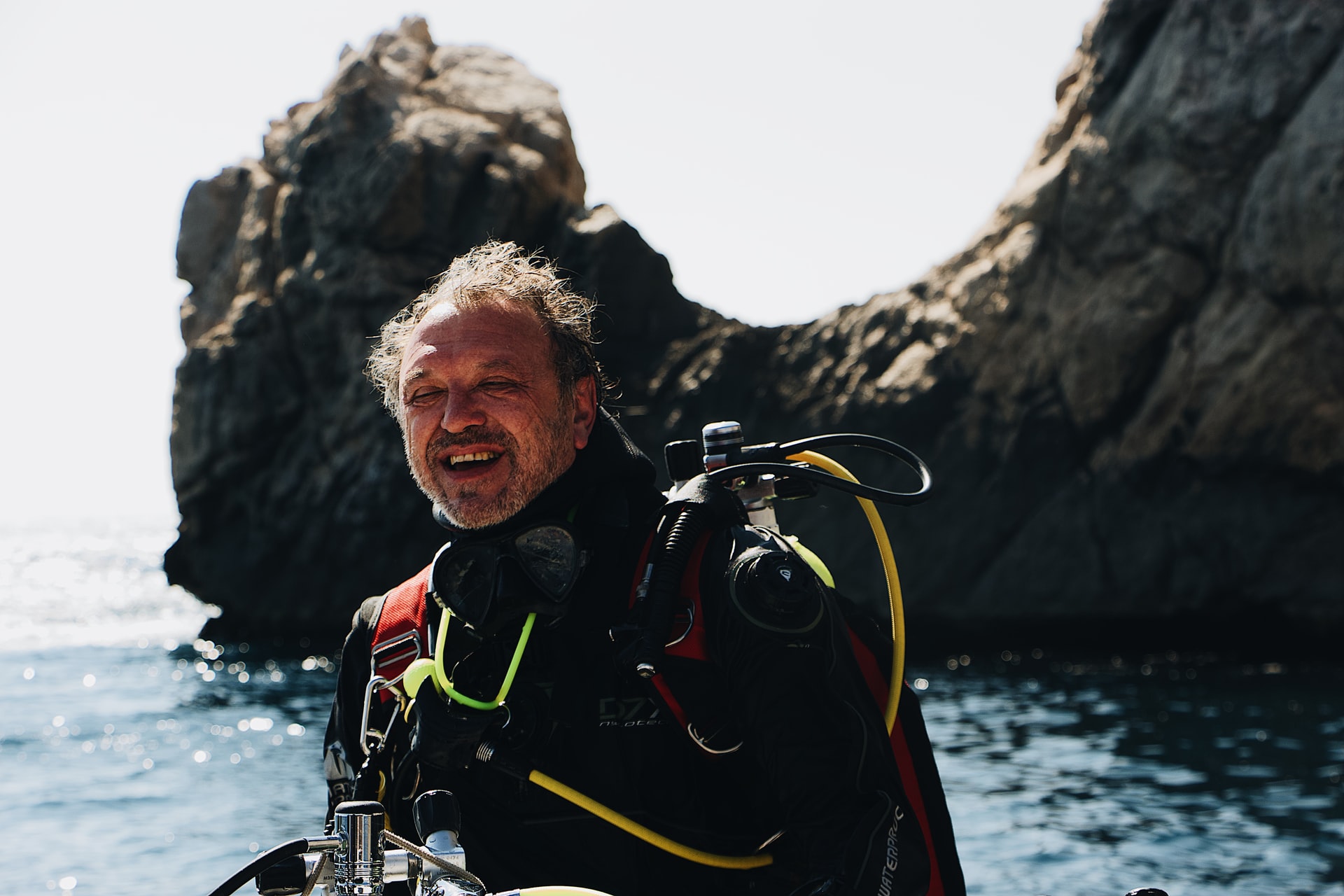
At What Age Should You Stop Scuba Diving? (+9 Tips for Older Divers)
-
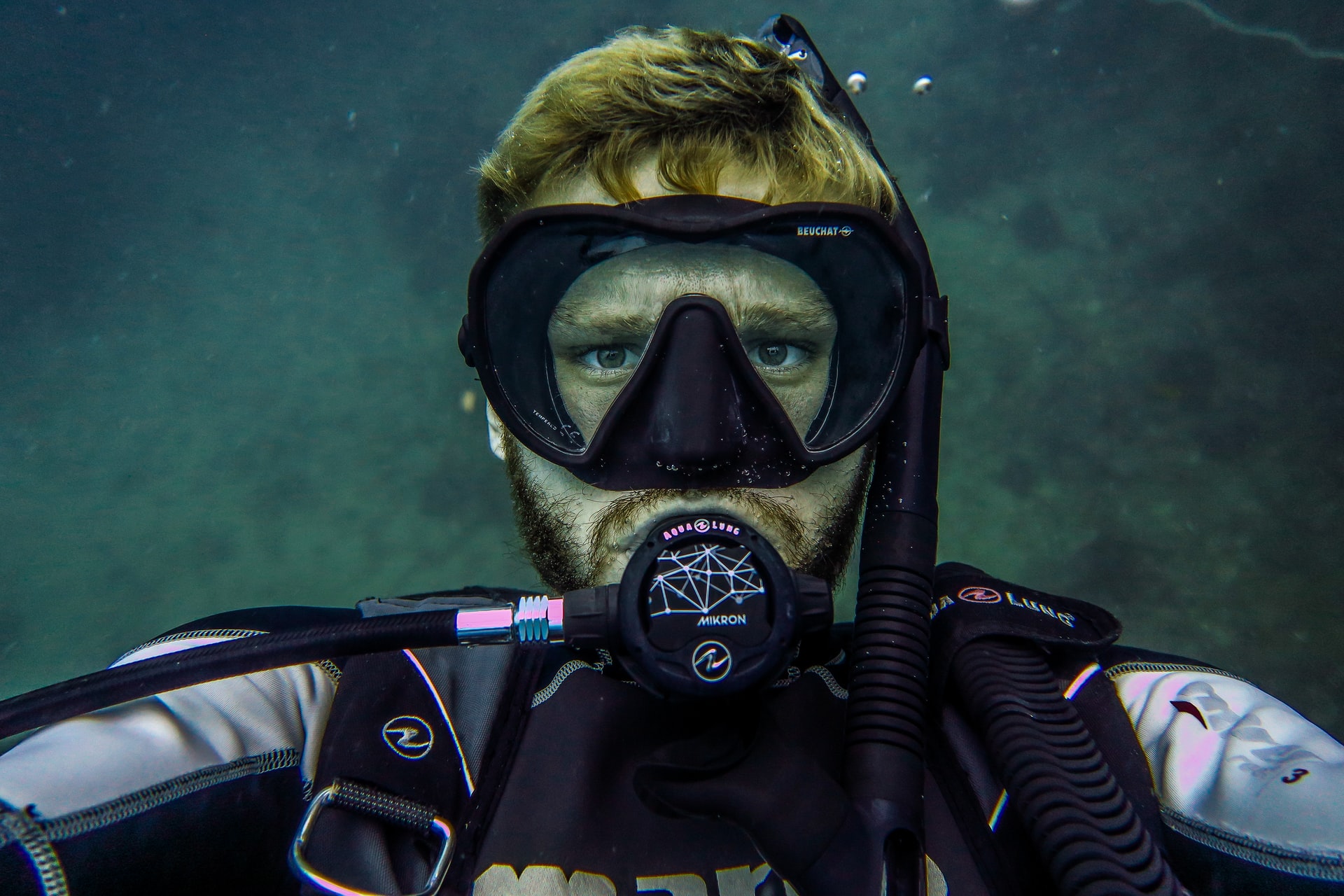
Should I Shave Before Scuba Diving? Crucial Facts (+9 Helpful Tips)
-

Why Do Scuba Divers Use Helium? (+Its Pros & Cons)
-
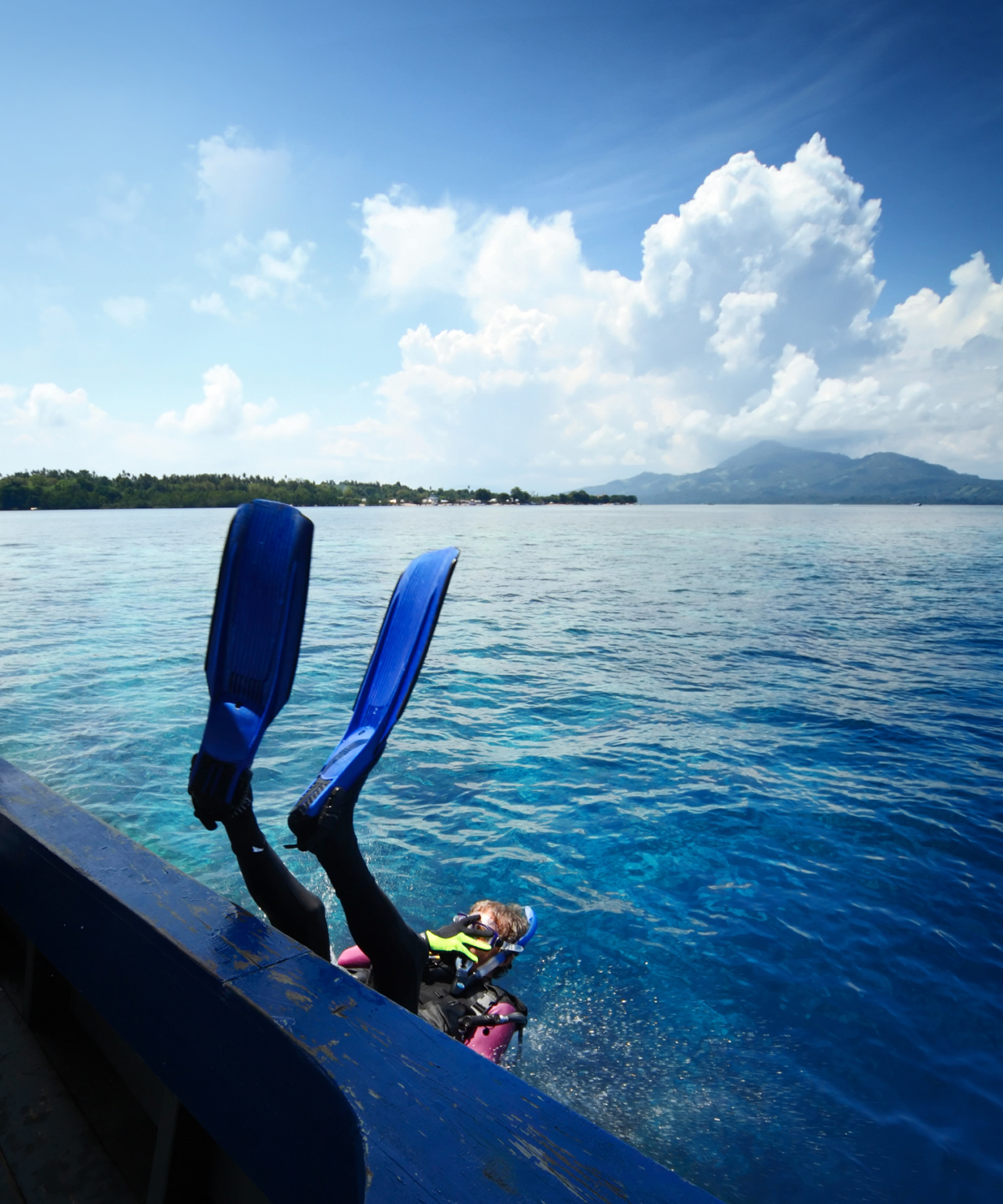
Why Do Scuba Divers Go in Backwards? (+3 Alternative Entries)
-

How Do Scuba Divers Sink and Float? (+Tips to Get It Right)

